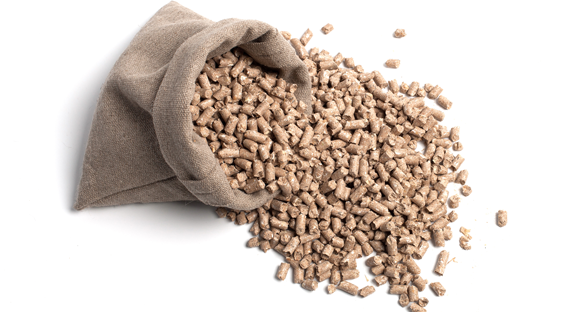
Image: Adobe Stock
Brazilian production of animal feed and salt recorded positive growth in 2021 and according to Ariovaldo Zani, CEO of Sindirações, “the estimate is for an increase of up to 4.5% and production of 85 million tons of food, in response to the dynamism of the animal protein production chain and also to the boost of the phenomenon of the humanization of pets”. The result confirms the good performance of Brazilian Agribusiness, and practically repeats the performance of 2020, when it recorded growth of 5% and total production of 81.5 million tons.
Pig farming, for example, is expected to reach record exports, mainly due to shipments to China. Poultry farming also achieved promising performance in meeting external demand, in addition to domestic demand, while egg production resulted in only marginal growth, although sustained by the consumer who opted for this animal protein that better suited their financial budget. “Respectively, the accounting can result in an increase of 6%, 4% and up to 1.5% in feed for pigs, broilers and layers”, informed Zani.
According to the Sindirações Executive: “the beef and dairy livestock chains faced the challenges of the year in very different ways, despite both activities being affected by poor pasture conditions, the prohibitive cost of grains, mineral supplementation and concentrates. and other inputs indexed to the dollar”, he says.
{module Form RD}
The feeder saw the arroba favored by the effect of parity in the price paid for exported beef, managed to largely offset the impact of inflation from the devalued exchange rate and thus invested in mineral supplementation and industrialized food. “In turn, dairy production, with mostly internal distribution and devoid of dollarized revenue, suffered a lot, including due to the cooling in demand for dairy products in general on retail shelves”, explained the CEO of Sindirações. The forecast points to an increase of 4% in the feeding of beef cattle and stability in the case of feed for the dairy herd.
Also according to Zani, living with dogs and cats, an occurrence intensified by the recent social isolation imposed by the pandemic, compelled their owners to demand more complete and balanced foods, which are estimated to have increased by 8% throughout the year.
Close observation of the performance of Brazilian aquaculture reveals the success achieved by this activity, which, despite being undertaken more recently, has a robust potential demand for feed for fish and shrimp, industrialized foods that, in the last decade, have grown at a rate of approximately double digits every year. year, and which will probably total another 7% in 2021.
Zani concluded: “The most optimistic projections allow us to assert that in 2022, climate amenities will contribute to the replenishment of global stocks and a reasonable relief in the prices of cereals and oilseeds, even though, in Brazil, values, pressured by the exchange rate, will continue to be positioned at a level higher than historically practiced. The expectation is for a scenario quite different from that which suffered the adversities that affected pastures and corn productivity from the second harvest and the concern with hypothetical deprivation in terms of supply and fulfillment of export commitments, even though the sector must maintain constant vigilance in the face of hypothetical shortage of fertilizers and pesticides.”
By: Eliza Maliszewski | agrolink










